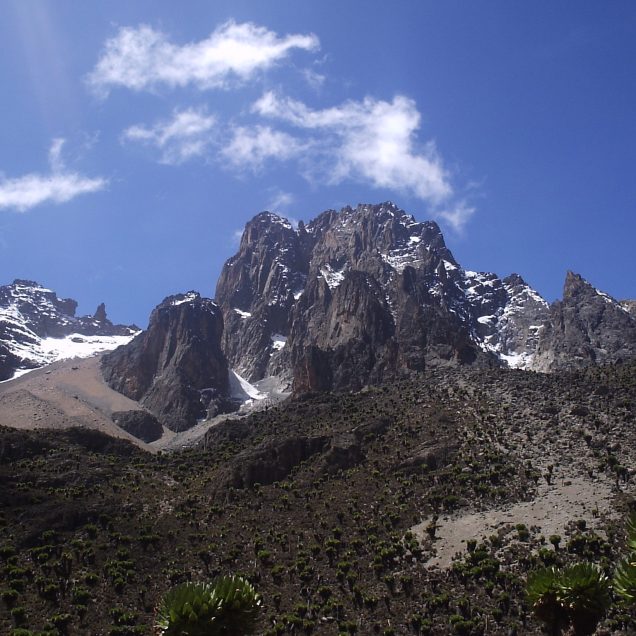Mount Kenya National Park is a UNESCO World Heritage Site and a national park located in central Kenya. It encompasses Mount Kenya, the second-highest mountain in Africa, and the surrounding alpine and forested ecosystems. Here are some key features and information about Mount Kenya National Park:
- Location:
- Mount Kenya National Park is situated in central Kenya, about 175 kilometers (110 miles) north-northeast of Nairobi. The park surrounds Mount Kenya, which is approximately 5,199 meters (17,057 feet) in height.
- Mount Kenya:
- Mount Kenya is an extinct stratovolcano and is the highest mountain in Kenya and the second-highest in Africa after Mount Kilimanjaro. The mountain has several peaks, with Batian being the highest.
- Ecosystems:
- The national park features diverse ecosystems as the altitude changes, including montane forest, bamboo forest, afro-alpine moorland, and glaciers near the summit.
- Wildlife:
- Mount Kenya National Park is home to various wildlife species, including elephants, buffaloes, monkeys, and a variety of bird species. The higher elevations are known for unique and specialized species adapted to alpine conditions.
- Chogoria Route and Naro Moru Route:
- There are several trekking routes to the summit of Mount Kenya, with the Chogoria Route and Naro Moru Route being among the most popular. These routes offer different perspectives of the mountain’s landscapes.
- Lakes:
- Mount Kenya has several lakes in its vicinity, including Lake Ellis, Lake Michaelson, and Lake Rutundu. These lakes add to the scenic beauty of the region.
- Glaciers:
- Despite the ongoing effects of climate change, Mount Kenya still features glaciers and snowfields, especially on the highest peaks. The Lewis Glacier is one of the prominent glaciers on the mountain.
- Sirimon and Naro Moru Gates:
- The national park has two main entrance gates: Sirimon Gate on the west side and Naro Moru Gate on the south side. These gates serve as starting points for treks and climbs.
- Hiking and Climbing:
- Mount Kenya attracts hikers and climbers seeking various levels of challenge. The trekking routes cater to different skill levels, and reaching the summit requires technical climbing skills.
- Biodiversity:
- Mount Kenya National Park is recognized for its biodiversity, including unique and endemic plant species adapted to the alpine and montane environments.
- Accommodations:
- The park offers accommodations, including mountain huts, campsites, and lodges, for trekkers and climbers. Accommodations are available at various elevations to support the ascent.
- Cultural Significance:
- Mount Kenya holds cultural significance for local communities, including the Kikuyu people. It is considered a sacred mountain and is associated with various cultural beliefs and practices.
Access to Mount Kenya National Park is regulated, and visitors are encouraged to adhere to conservation guidelines to preserve the unique ecosystems and biodiversity. The park provides an extraordinary experience for those seeking adventure, natural beauty, and a sense of accomplishment from reaching the summit of a majestic African mountain.






